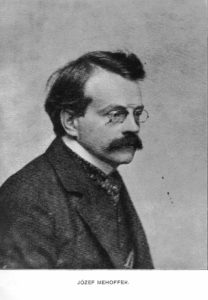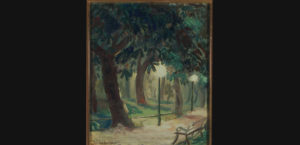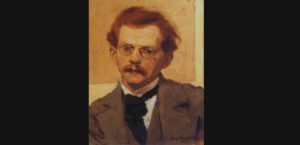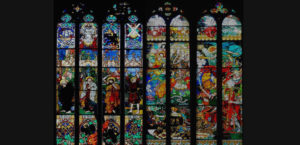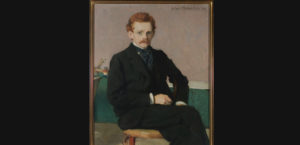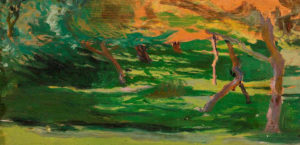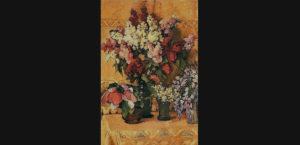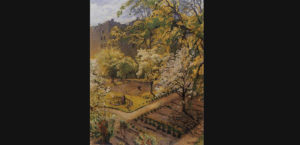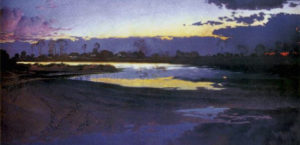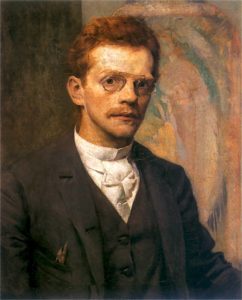The artist was born on March 19 in the small town of Ropczyce near Lviv (Austria-Hungary). The artist’s parents were Austrians by birth; nevertheless, they considered themselves to be Polish and raised their children in a patriotic spirit.
1869 - 1949
Jozef Mehoffer
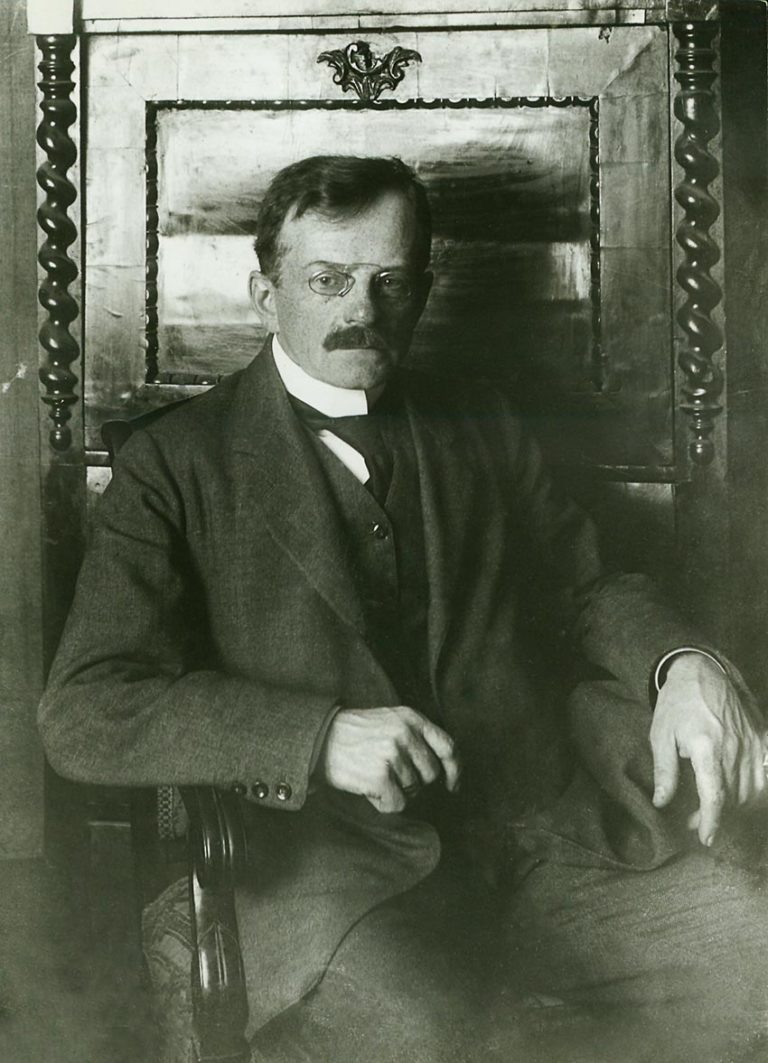
description
A Polish painter, graphic artist, author of stained glass windows and mosaics, designer of fabrics, interiors and furniture, theater decorator, poster master, the leading art representative of “Mloda Polska” (“Young Poland”).
Jozef Mehoffer is one of the founders of the community of Polish artists “Art”, which popularized modern avant-garde painting in the country. Mehoffer gained international fame thanks to the creation of stained glass windows of the Cathedral of St. Nicholas in Freiburg (Switzerland). In addition, the artist was a talented teacher. He was a professor, and later was a rector of the Krakow Academy of Arts; among the students of Mehoffer, there were many famous artists.
Key ideas:
– The artist’s work is distinguished by diversity, both in the choice of themes and in the plastic means of expression. Jozef Mehoffer created traditional oil painting and watercolors, talented graphic works, including posters and illustrations, as well as works of decorative and applied art, most often choosing stained glass windows and mosaics.
– The artist participated in the design of interiors, designed patterns for carpets and fabrics and many other things. All his works are distinguished by one common feature – the author’s highest professionalism and his desire to bring his work to perfection.
– The painting style of Mehoffer is characterized by symbolism, lyricism, elegant line and the decorativeness of Modern. Inspired by the art of the representatives of the Vienna Secession, the artist created refined compositions, in which there is noticeable sincere admiration for the beauty of nature and the inner world of a man.
– A rich combination of saturated colors, a wide variety of palettes and a careful elaboration of details are a distinguishing feature of the paintings of Mehoffer from his mature period. The most striking example of this is the paintings “Muse”, “Portrait of the Artist’s Wife with Pegasus” and many others.
– After 1910, symbolism and decorativeness in Mehoffer’s works gradually give way to more lively and spontaneous scenes; a dense color palette is saturated with bright and light tones typical of both Impressionists and Modernists. At the same time, the artist somewhat refuses from a clear line and begins to work with color spots, making images with the help of soft changes of light and shadow. The artist paints mostly landscapes filled with sunlight and a peaceful mood. The brightest work of this period is the painting “The May Sun”, 1911.
– Apart from painting, the artist was actively engaged in graphics, experimenting in various artistic techniques. His predominantly monochrome graphic images are distinguished by expressive lines and dramatic plots. Mehoffer worked a lot on the expression of movement and human emotions, emphasizing them with thick dashes and the dynamicity of compositions. The artist’s illustrations, etchings and lithographs are the best examples of the graphics of the art movement “Young Poland”.
1869
1887
1889
1890
1900
1910 - 1920
1920
1930
1940
1946
The birth of the artist
Started studying law at the Jagiellonian University
Started studying law at the Jagiellonian University. At the same time, he entered the Academy of Fine Arts in Krakow (his teachers were Jan Matejko, Isidor Yablonsky and Vladislav Lushkevich). At the beginning of his creative career he worked a lot on stained glass windows, mosaics and paintings of churches. One of his earliest works is the painting of the St. Mary’s Church in Krakow and the design of the stained glass window for the choirs of this church, created together with Wyspianski.
Continued art education in Vienna
Continued art education in Vienna; in Paris, he attended the Julian Academy and the Leon Bonn studio. During this period, he traveled to many European countries, including Germany, Spain and Switzerland. During the study trips, he got acquainted with the architecture and church paintings of the most famous cathedrals.
Pictures of the artist were included in the exhibition of the Zachęta Society
Pictures of the artist were included in the exhibition of the Zachęta Society for the Encouragement of Fine Arts in Warsaw. His first solo exhibitions were taken here later (1913, 1935, 1937). He painted several large allegorical canvases and mastered new graphic techniques. During a trip to Italy, he became acquainted with the mosaic used in the workshops of Murano. This resulted in numerous stained glass windows for Polish cathedrals and decorative ornaments for churches, in particular, the stained glass windows “Apostles” (1896), “Our Lady of Victory” (1897) in the Cathedral Gothic Cathedral of St. Nicholas, Friborg, Switzerland. In Vienna, his works were exhibited in 1893 and 1897-98; in Berlin – in 1895-96 and 1899.
He was awarded a gold medal at the World Exhibition in Paris
He was awarded a gold medal at the World Exhibition in Paris (1900), at the Universal Exhibition in Chicago (1904) and in Munich (1905). He became an associate professor, then a professor at the Department of Decorative and Religious Painting at his native Krakow Academy, one of the founders of the Polish Artists Society “Sztuka” (“Art”), a member of the Vienna Association Hagenbund, the Paris Society of Fine Arts and the Royal Society of Fine Arts in Brussels. He took part in numerous exhibitions in Vienna, Berlin, Paris and Los Angeles. He became the author of the project for the polychrome painting of the treasury (1902), the Shafrantsev Chapel in the Wawel Cathedral (1907), the Cathedral in Plotsk (1903), the Armenian Cathedral in Lviv (1906–1910).
The artist started working in a lighter palette
The style of the master underwent serious changes. The artist started working in a lighter palette, paying much attention to sunlight in his paintings. He mainly created landscapes. A bright example of such canvases is “White Poplars” (Alley in Vuyche, 1919), etc. During this period, Mehoffer also created many portraits, in which he became an unsurpassed recognizable master. The works were exhibited in Venice (1910, 1914), in Rome (1911), London (1921), Brussels (1925), Helsinki and Florence (1927), Los Angeles (1928), Padua (1931), Philadelphia (1934) and Madrid (1935).
He became more popular
He became more popular; the artist’s works were included in exhibitions in Venice (1920, 1926), London (1921), Torun (1921-22), Lodz (1924), Brussels (1925), Helsinki and Florence (1927), Los Angeles (1928).
Participated in exhibitions in Padua, Rome, Philadelphia, Madrid
Participated in exhibitions in Padua (1931), Rome and Philadelphia (1934), Madrid (1935). During World War II, he and his family left for Lviv, where he decorated the Greek Church. He was arrested by fascist soldiers. After several months of imprisonment, the artist was released thanks to the intercession of the Italian government and the Vatican.
Returned to Krakow.
Returned to Krakow. In Warsaw in 1945, a personal exhibition was organized by The Polish Society for the Encouragement of Fine Arts.
The death of the artist
The artist died on July 8 in the city of Wadowice at the age of 77.

